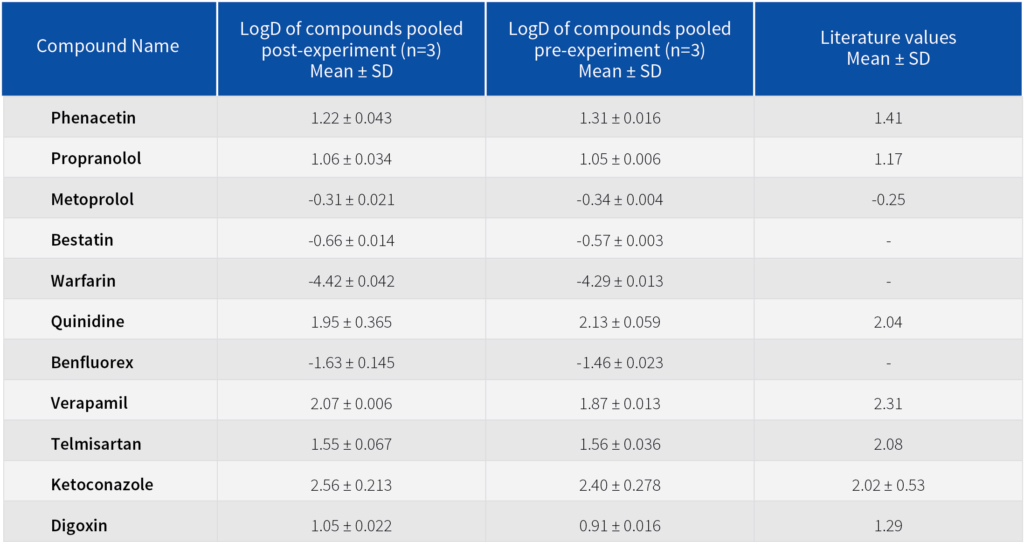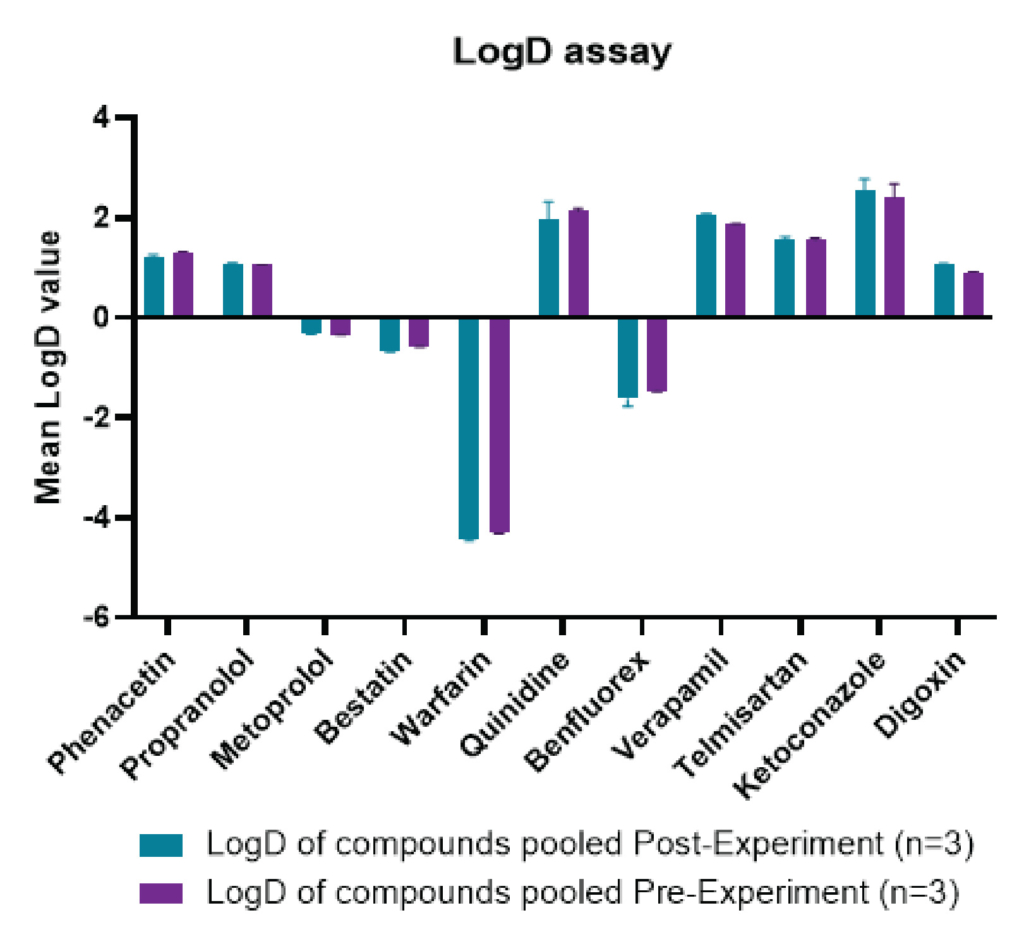In the current study, our team validated a LogD assay that combines shake-flask method with LC-MS/MS for 11 QC compounds, belonging to varied lipophilicity and ionization classes. The method is useful in determining the LogD values in a high-throughput format. We used different sample pooling approaches (post-experiment versus pre-experiment) to effectively screen LogD values of multiple QC compounds using the shake-flask method, followed by a robust LC-MS/MS analysis for accurate LogD measurements. The post-experiment approach enabled individual characterization of LogD values for each QC compound, offering specific distribution data in octanol/water for detailed comparison across compounds. The LogD values obtained by post-experiment technique aligned with the previously reported literature values (Table 1).
Table 1: LogD data from the experiments (post-experiment and pre experiment) versus literature values.

The pre-experiment technique, which pooled the 11 QC compounds before the shake-flask assay, streamlined sample processing before LC-MS/MS analysis. This pooling approach expands the effective LogD measurement range (-0.66 to 2.40) and yields reproducible data across a wide range of values (Figure 2). It also saves ~20% time compared to the post-experiment pooling technique. Additionally, the pre-experiment technique simulates a biological sample where multiple compounds are present together, revealing collective distribution in octanol/water, ideal for screening overall behavior rather than individual compounds. The LogD values obtained by pre-experiment technique are given in the table 1 and are comparable with the post-experiment technique LogD values.

Figure 2: A graph comparing the LogD values of the pre-experiment and in post-experiment analytes. Each test drug was analyzed in triplicates and data represents mean, SD and % CV for each set of triplicates.
Conclusively, combining the traditional shake flask method with LC-MS/MS bioanalysis and using a sample pooling approach, allowed for efficient, high-throughput screening of LogD during the drug discovery process. High-throughput beside allowing rapid testing of multiple compounds simultaneously generates consistent and reproducible data and are cost-effective. Furthermore, in silico LogD predictions can be refined by comparing them with the real-world experimental data, facilitating more accurate and relevant predictions for guiding drug discovery and development processes.

